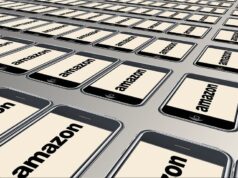
Education and training have always evolved in parallel with technology. There is a certain symbiosis to the way in which they interact. Education feeds off of technological innovation. Technological innovation is made possible by improving educational standards. A perfect union!
From the humble pencil to the modern smartphone, we have had our development altered by era-defining technological devices. Some innovations have changed training and education more than others. Here are 5 of the technological marvels most responsible for altering the ways in which we learn.
The Pencil
Although the pencil was invented in the 1700s, it was not adopted by educators until the Victorian era. Students and trainees were required to write using a succession of other methods that were far inferior to the humble pencil. Children would learn to write using cumbersome slates and scratching implements. Trainee draughtsmen would use chalk. Calligraphic students would use quills and brushes. This might explain why the oral examination was the favored method of assessment in educational institutions: writing simply wasn’t an efficient way of conveying information.
That all changed with the patenting of Joseph Dixon’s wood planing machine in 1866. Using Dixon’s machine, pencils could be produced at almost no cost at a rate of 132 per minute. This meant that prices for educational institutions dropped from around 75 cents before 1866 to 1 cent afterward. This meant that exams could be given in a written form and stored, mistakes could be erased, and children could learn to write on cheap, disposable paper. The popularization of the pencil was one of the biggest developments in educational history.
The Epidiascope
Projections play a big part in all stages of education: from early schooling to in-work training courses. There are not many people in this world unfamiliar with PowerPoint projections or educational films. Projections started being used as educational aids in the 1930s with the introduction of the epidiascope.
The epidiascope was the first electrical projector to be used in large numbers in educational institutions. It was actually two projectors in one: a diascope for projecting slides and an episcope for projecting opaque objects like books and diagrams.
Epidiascopes were used in all sorts of educational settings and gave rise to all sorts of technologies that we still use today. Until the digital revolution, slide projectors that worked using similar principles to epidiascopes were still used in schools regularly.
Radio
It is hard to understate the significance of Guglielmo Marconi’s invention in the history of humankind. The popularization of the radio affected all areas of society – including training and education. During the 1920s and 1930s there was a great deal of optimism about the ways in which radio could help educate. Unlike conventional educational systems, which were very segregated, radio could theoretically bridge class and race gaps. It could also bring programming to people in rural areas that had no access to higher education of any sort. During World War Two, civil training programs were broadcast regularly on British radio. Families would gather around and receive air raid training in between news and music programs.
The Personal Computer
The Personal Computer has completely revolutionized education. Everything from modern managed learning services to educational services for people with dyslexia has been made possible thanks to innovations in Personal Computing.
Although educational institutions were using mainframes and minicomputers in administration and technology classes, the widespread use of Personal Computers in education began in earnest in 1975 when Apple 1 systems were donated to American schools. A major milestone was reached in the United Kingdom in 1988 when the Education Reform Act made Information Technology a compulsory subject in secondary schools.
Computers are more important in training and education than ever before. The COVID-19 pandemic has meant that remote working and learning are now absolutely essential for huge portions of the population. Without computers, educational systems would have collapsed, and employers would have no way of quickly distributing training materials to their staff.
Mobile Technology
The spread of mobile computing technology has certainly changed the ways in which people can be educated and trained. Smartphones – by far the most commonly owned kind of mobile computing technology – have been particularly influential. With almost every student owning some kind of internet-capable technology, it is far easier for educators to share learning materials and take pop quizzes.
For professional training, smartphones give educators a way of distributing specialist tools and instructional videos. They make it easier for an educator to monitor the progress of trainees and identify trends in test results.










